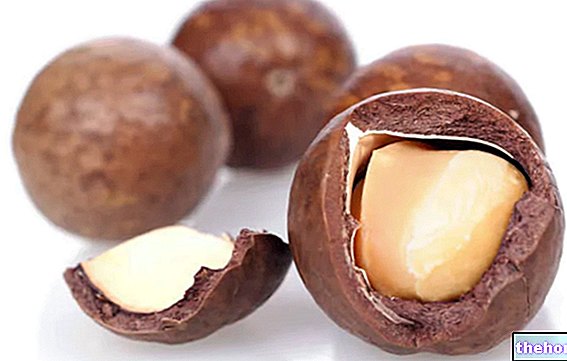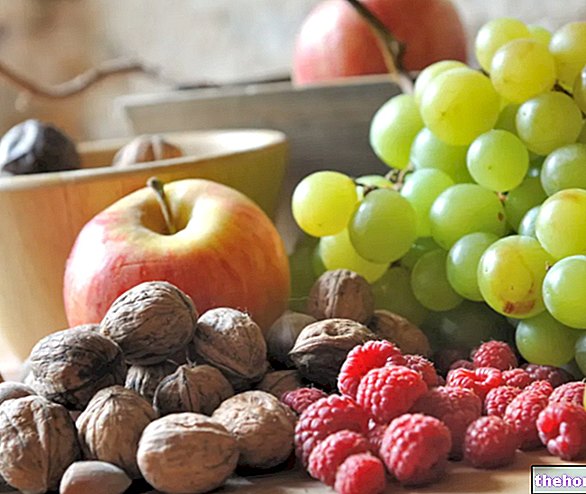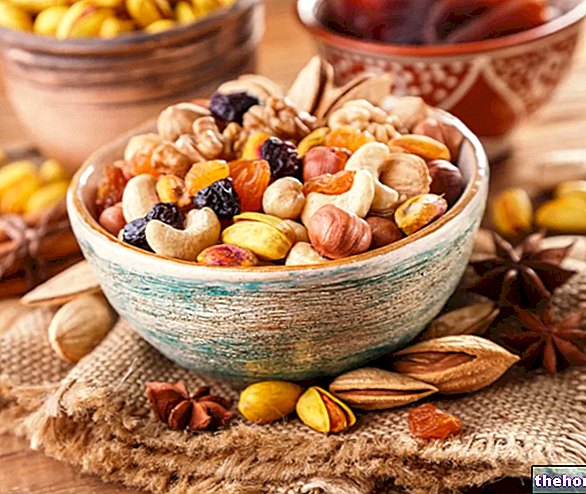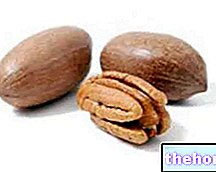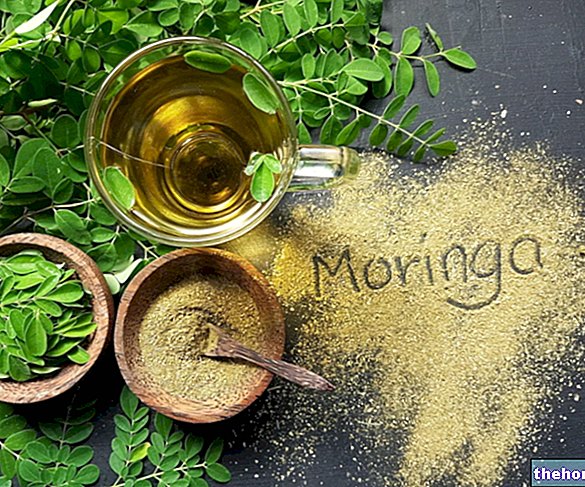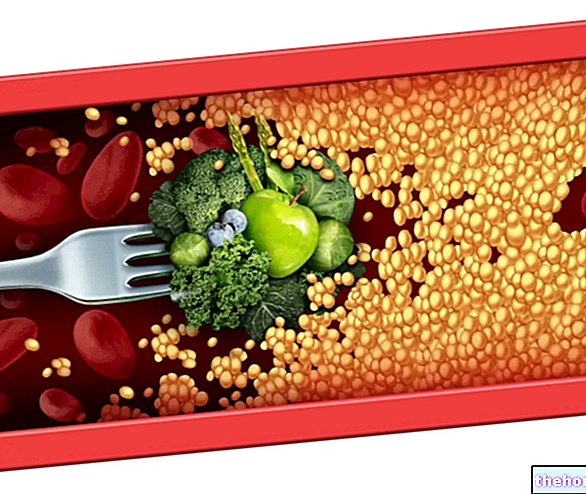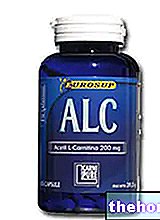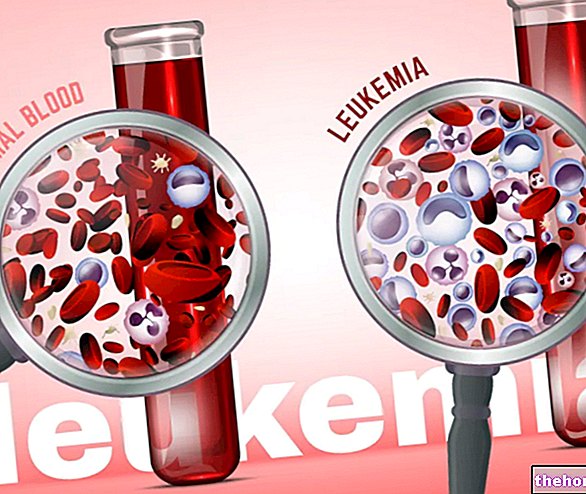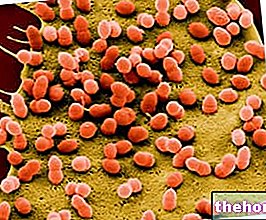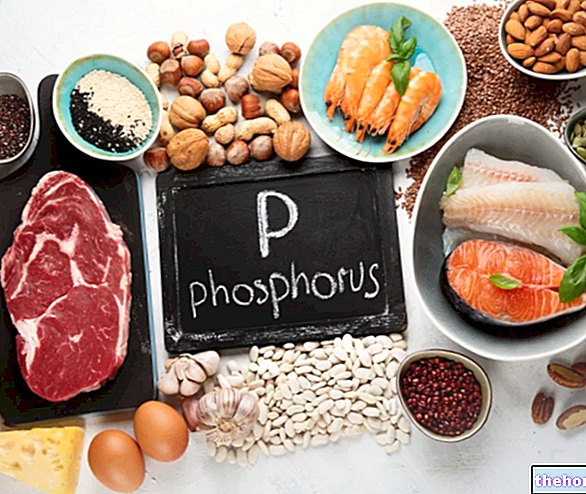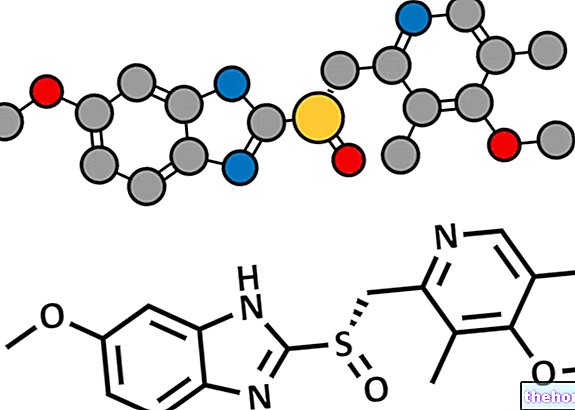- fresh fruit (associated with the fleshy, sour and sugary products of plants)
- Dried fruit (dried fruits such as hazelnut, some fleshy fruit drupes such as walnut, etc.)
- Preserved fruit;

Note: Fresh fruit and dried fruit will be examined below, while for the description of preserved fruit, see the article concerning seasonality and fruit preservation methods.
and yellow or green fruits, sources of vitamin A,VII) vegetables and fruit rich in vitamin C. In reality, fresh fruit is characterized by many other nutritional aspects and the aforementioned vitamins constitute only a fraction of the important nutritional contribution of fruit.
Fresh fruit, if consumed in suitable portions (400-800 g / day) and appropriately contextualized according to the composition of the diet (to avoid exceeding with simple sugars), represents a supporting pillar of human nutrition.
Fresh fruit first of all brings large quantities of water, facilitating the maintenance of hydration even in subjects who neglect or do not feel the stimulus of thirst. Hydration is a fundamental aspect for the general homeostatic maintenance of the organism and effectively prevents some potentially harmful conditions such as kidney fatigue and metabolic acidosis.
From an energy point of view, fresh fruit brings a rather heterogeneous quantity of calories, both based on the botanical species and on the seasonality of the fruit. It ranges from 16kcal / 100g of watermelon to 72kcal / 100g of mandarins, mostly supplied by fructose. Obviously, there are also particularly caloric fresh fruits with a nutritional composition that differs from the average; this is the case of coconut (364 kcal / 100g and 35g of lipids), avocado (231 kcal / 100g and 23g of lipids), chestnuts (165 kcal and 25.3g of starch) etc.
The quantity of lipids (with some exceptions) is reduced but mainly composed of unsaturated and polyunsaturated (even essential) lipids, while the protein one is of low biological value and quantitatively irrelevant.
On the contrary, the high intake of soluble dietary fiber is noteworthy. It, consisting mainly of water-soluble polymers, contributes considerably to the achievement of the minimum daily quota (30g / day) useful for maintaining intestinal integrity and, as prebiotic, to the tropism of the natural colonic bacterial flora.
The vitamin content is excellent; as already explained, vitamin C (ascorbic acid) and vitamin A (in β-carotene) are the masters, but there are also good quantities of tocopherols (vit E) and modest quantities of thiamine, riboflavin, niacin, folic acid and vitamin K.
As far as the saline picture is concerned, we remind (even to the supporters of recent nutritional "theories") that fresh fruit is, together with vegetables and whole grains, the group of foods that contributes most to the intake of alkaline ions and in particular of magnesium (Mg). There is also potassium (K), zinc (Zn), selenium (Se) and copper (Cu).
One more word must be spent to illustrate the antioxidant potential of fresh fruit; we know that at the cellular level these molecules represent a real shield against oxidative stress, therefore against aging, carcinogenesis and atherogenesis. Among the antioxidants. more abundant than fruit we remember vitamin C, vitamin A, vitamin E, selenium, zinc, phenolic substances (resveratrol but not only!), phytoestrogens (isoflavones) etc.
Recently, dried fruit has gained more importance in the collective diet; the major institutions, by virtue of its high content in polyunsaturated fatty acids, established that dried fruit must be a fixed element of human nutrition through frequent but at the same time moderate consumption.
Dried fruit essentially contains fatty acids of the omega6 family (ω ‰ 6); the omega6, unlike the omega3 (ω ‰ 3) typical of fish, despite being essential molecules are NOT deficient in the collective diet. They are widely distributed in foods and an excess of them towards omega3 (omega3 / omega6 ratio) pro-inflammatory decompensation. The fatty acids most present are therefore: linoleic acid (LA 18: 2), gamma-linolenic acid (GLA 18: 3), diomo-gamma-linolenic acid (DGLA 20: 3), and arachidonic acid ( AA 20: 4).
Other nutritional components are also present but, considering the small consumption portions (a few grams) imposed by the high caloric intake (> 500kcal / 100g), they do not seem to significantly affect the recommended rations. Obviously, if you use them more important, the contribution of mineral salts and tocopherols becomes significant.
For further information: Dried Fruit (fructose), consuming fruit should help raise the calorie intake of the diet'
... and my answer is that:
'Fruit consumption must be contextualized and managed in the most subjectively suitable way ... that is:
Fruit provides simple carbohydrates just like any food product from the confectionery industry, but who would feel like comparing an orange to a brioche? From my point of view, consuming fruit instead of sweet foods represents one of the cardinal principles of contemporary dietary CORRECTION, as well as a cardinal principle of the TRUE Mediterranean diet.
Many sweet foods (therefore added in sucrose) are born (as you will read in the article Seasonality and conservation of fruit) as preserved foods (see jams, jams, fruit in syrup, candied fruit, dehydrated fruit, etc.), therefore, they SHOULD only be consumed in those few weeks in which fresh seasonal fruit is NOT available (mid-winter so to speak). Unfortunately, this is not the case! Sweet foods are available to consumers throughout the year and have almost supplanted the consumption of fresh fruit ; on the other hand, replacing sweet foods with fresh fruit would allow:
- Increase hydration
- Increase your intake of minerals
- Increase your intake of vitamins
- Increase your intake of antioxidants
- Increase the intake of soluble dietary fiber (!!!)
- Reduce the intake of simple sugars by at least 500%
- Decrease your overall calorie intake
- Moderate the insulin response
- Promote satiety
This is not meant to convince readers to abolish all sweet foods ... but simply to remember that replacing most of them with fruit could significantly increase the quality of your diet.
'And for dried fruit?'
Well, it is a group of foods that are undoubtedly rich in essential lipids but still with a very high energy density. If consumed in moderation and associated with Lean protein sources (so as not to exceed the lipid content equal to 30% of total calories) , dried fruits can provide absolutely noteworthy benefits ... but when you start "crushing walnuts (almonds, pistachios, pine nuts, hazelnuts, etc.) ... the important thing is to be able to stop at the right time!" given the pleasantness of the product, it is at least a DIFFICULT attitude but to maintain ...)
Fruit tart
Problems with playing the video? Reload the video from youtube.
- Go to the Video Page
- Go to the Video Recipes Section
- Watch the video on youtube

